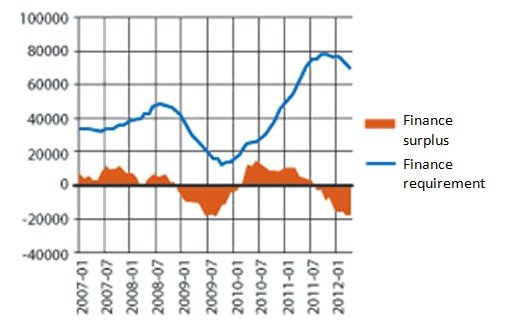Does Turkey always have to sacrifice growth?
Isn’t it a major weakness for Turkey to sacrifice growth in order to ease its current account deficit?
The economy slowed down drastically in the first quarter of the year. Certain indicators suggest that the second quarter was no different in this respect. At best, the process of slow growth ends after the second quarter and Turkey’s economy switches to a phase of faster growth unless the European crisis deepens. But in the end, it is quite likely that Turkey will miss the growth target of 4 percent estimated in the Medium Term Program. In that case, the recovery in current account deficit might stop and be replaced with a moderate deterioration, despite the recent drops in oil prices. If the European crisis deepens and threatens global financial markets, however, this analysis will be void.
We have to reinvestigate why Turkey still has a high current account deficit despite the fact that growth rate has been decreasing, currently standing below the potential rate of 4.5-5 percent. From one angle, Turkey is highly vulnerable against the changes in international appetite. A drop in risk appetite automatically hinders Turkey’s ability to fulfill the finance requirement resulting from current account deficit. This challenge was felt lastly starting with the second half of 2011.
You know I generally neglect the finances from net errors and omissions and from the fall in official reserves, and focus on the rest, calling such capital movements “the normal finance.” Having done this, a critical finance deficit for the recent period comes to the fore. The figure below shows the 12-month cumulative finance requirement (current account deficit) and the difference between normal finance and finance requirement. Positive differences suggest a finance surplus. As the figure reveals, Turkey has been suffering from a finance deficit since August 2011. By April 2012, the deficit reached as high as $18.2 billion. If we focus on monthly figures instead of 12-month cumulative figures, current account appears to have recorded a surplus. This of course is a positive development. However, it doesn’t change the key outcome: Turkey’s access to foreign finance is hindered as tensions rise in the global economy.
Now there is no doubt that Europe will prone to tensions also in the period ahead. Under these circumstances, Turkey again needs to stay focused on the current account deficit-growth nexus. Does Turkey have to sacrifice growth in order to ease its current account deficit? Isn’t this a major weakness for the seventeenth largest economy of the world?

Cumulative finance requirement resulting from current account deficit and the difference between normal finance and finance requirement: January 2007 – April 2012 ($ million, 12-month cumulative). Source: CBRT.
This commentary was published in Radikal daily on 26.06.2012




